10 Ways We Would Fix the U.S. School System
Our kids are remarkable. They have unmatched gifts and perspectives. Yet they struggle academically – in large part because schools are not traditionally set up to recognize and build upon their learning styles. The solutions, it turns out, are often easier to visualize than they are to enact. Here is how we would start to re-think school.
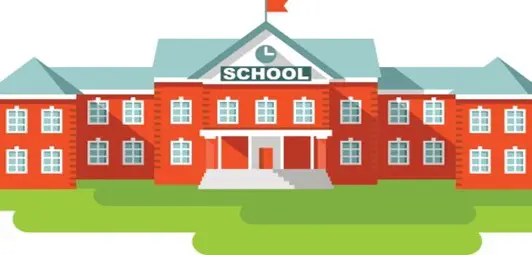
If We Ran the World
At school, our kids too often feel different. When they don’t fit the typical learning mold, they get pulled out of class for special instruction. When focus doesn’t come easily, they earn demerits. When testing is painful, their grades don’t reflect their learning. They are expected to squeeze their special ADHD brains and talents into a neurotypical box — and that creates a lot of difficulties.
“Nathan won’t sit down and pay attention.” “Emma always daydreams in class.” “Jack failed another exam.” But what if we could change the system to fit our kids, not the other way around? In an ideal world, these are the first things we’d do to improve education — and make school more stimulating, rewarding, and fulfilling for students with ADHD.

1. Train All Teachers in ADHD Symptoms and Interventions
Unfortunately, “a lot of people think ADHD is an excuse,” says Susan Kruger, M.Ed, “The best thing you can do is educate them.” This includes teachers. Many classroom problems arise when adults mistake ADHD symptoms for willfully bad behavior.
A 2015 study in Pediatrics found that 7.2% of children worldwide have ADHD. We would love for all teachers to complete a required course (or 10) explaining the neurobiology and symptoms of ADHD, how it can look different in boys and girls, and how symptoms may appear in the classroom. Equally important, teachers should learn the time-tested strategies for instruction, organization, scheduling, and discipline that work best on ADHD minds. Learning to see ADHD symptoms for what they are, and implementing a handful of classroom tweaks can make an enormous difference.

- Extend Recess and Make it Non-Negotiable
Lunch and recess are, for more grade-school students, as essential as reading, writing, and math. Time spent playing kickball or running the bases teaches our kids valuable social skills. Plus exercise releases chemicals into the brain that promote focus, sequencing, and working memory once the bell rings again.
“Kids need a break,” says Stewart Trost, assistant professor of kinesiology at Kansas State University. “They can focus better in the classroom when given that break.”
“Kids who have recess display an improved ability to stay on task,” says Dr. Larry Silver a regular ADDitude contributor. That means less fidgeting, more focusing. It also means building friendships and giving teachers and administrators a chance to see who is being bullied, isolated, or teased.
Yet many schools cut recess to add more classes, or take it away as a punishment – even though the Centers for Disease Control says, “Exclusion from recess for bad behavior in a classroom deprives students of physical activity that can contribute toward improved behavior in the classroom.”
In our perfect school, recess would never be withheld as a consequence. Instead, we would add 5-minute activity breaks throughout the day, make recess longer, and give kids the opportunity to earn extra recess with good behavior.

- Develop Innovative Testing Methods
Many of our kids are twice-exceptional – gifted, but also learning challenged. They may have a high IQ, but struggle to show it on tests because of slow processing speed, poor working memory, or problems expressing themselves in writing. For kids who qualify for an IEP or 504 plan, test modifications can accommodate these significantly different needs. For everyone else, grades and self-esteem suffer.In an ideal school, teachers would give tests in the mornings when kids are most fresh, and over flexible time periods. Long tests would be broken into shorter (30-minute) sessions over several days, with frequent breaks and extra time when needed. “Kids say that receiving extended time on tests or doing special projects or extra homework in place of tests has helped them go from failing grades to, in some cases, the honor roll,” says Chris Ziegler Dendy, M.S.
We love the idea of allowing students to earn extra credit with creative assignments like interviewing a war veteran for history class, cutting out magazine articles related to a book they’re reading in English class, or correcting errors made on tests for homework.
Teachers can also make exams more ADHD-friendly by using multiple-choice and true/false questions to jog memory, administering oral exams, allowing open-book tests, and accommodating different learning styles with creative formats like collages or dioramas. Answer bubbles should be bigger, directions should be clear, and important words should be highlighted using varying typeface (style, color, size). Kids should also be allowed to use a timer, calculator, word processor, dictionary, or spell-checker to help them with common problems like spelling or losing track of time during an exam.
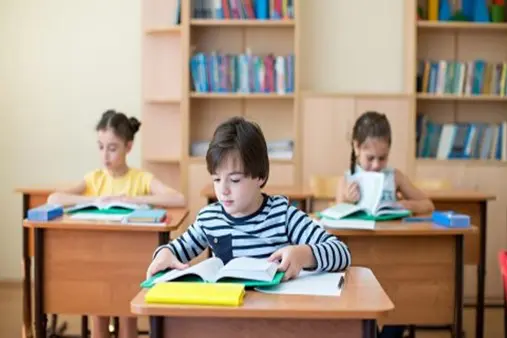
- Offer Alternative Seating Options
Many teachers assign seats with class dynamics and efficiency in mind. But students with ADHD, who are easily distracted and often have high energy, need additional considerations in the classroom seating plan.
Students with ADHD work well near the front, where they are close enough to pay attention yet far enough away from doors and open windows that might be distracting. “Some educational experts suggest that distractible students benefit from watching and taking cues from others regarding the activity of the moment,” says Chris Zeigler Dendy, M.S. Sitting next to a good role model can help students with ADHD learn to mirror attention skills.
In an ideal school, students could use standing desks or fidget seats with swinging foot bars designed to let them expel energy and focus without disrupting the class. If kids are frequently overwhelmed, a calming area with a bean bag or small tent can give students a quiet place to reset.
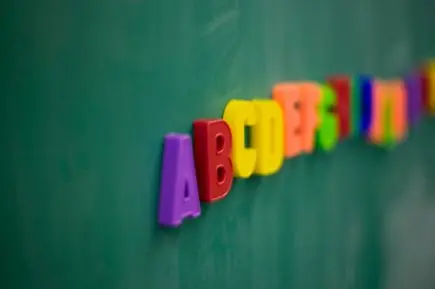
- Use Multi-Sensory Teaching Methods
Students with ADHD and related learning challenges can struggle with math, reading, and writing. “Multi-sensory strategies, novelty, and active approaches can help,” says Sandra Reif, M.A.
In today’s public schools, spelling and arithmetic are often taught sitting quietly at a desk, completing worksheets. In an ADHD-ideal school, students would learn to spell with magnetic letters or a paint brush. They would call out multiplication tables as part of a song, while jumping rope or bouncing a ball. Students would use recorders to spell or add correctly and then listen back to review.
“These games will show your child that math does not have to be all drudgery and ‘sit still and work,’” says Melinda Boring, M.A. Multi-sensory methods can provide the extra stimulation a child needs to engage with a difficult subject. Learning standards must be upheld, whether or not students have restless minds, but using simple activities and games that involve the senses can make lessons more tolerable, and even fun.
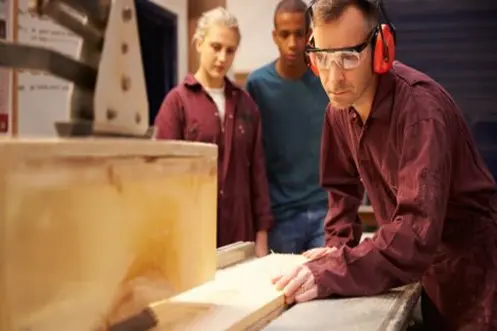
- Promote Vocational Classes
For 12 years, “we are forced to sit in classes that either don’t hold our interest or don’t match up well with our abilities. Why force yourself into a career that is just more of the same?” asks Bob Seay, an ADDitude contributor.
You understand why college is not appealing to your child, but you obviously want all of life’s best opportunities for him. Think about introducing him to vocational courses that lead directly to a career as a computer technician, veterinary assistant, or paralegal.
Vocational courses used to be common in secondary education – shop, home economics, auto repair. Our ideal school would return them to the curriculum. The opportunity to try out culinary training, cosmetology, or mechanics before graduation can build self-esteem in the student who has struggled in traditional courses. It can also reveal a direction or passion in life, while offering real job training. “It starts with knowing yourself, knowing your talents, and trying things,” says Theresa Maitland, Ph.D.
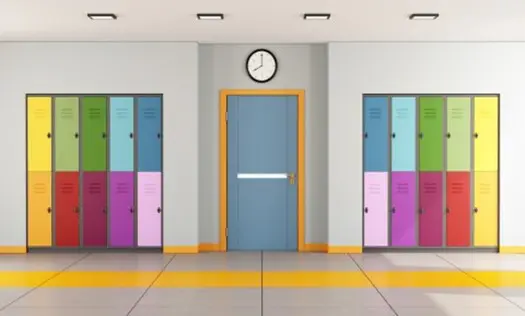
7. Encourage Smart Scheduling
“We start each day with a limited amount of self-control, and as we use it up, we deplete it,” says Gretchen Rubin author of The Happiness Project. Focusing in class takes energy and self-control, and the reminder strategies our kids use to rein in physical and verbal impulses are exhausting. As the school day wears on, students with ADHD run out of steam. Front-loading a student’s curriculum with the most difficult subjects can promote greater learning while energy is still high. A recent study showed that, for every hour after 8 A.M. an exam took place, the students’ test scores dropped 1%.
Creative scheduling at school that alternates high- and low-energy lessons can make a difference. Follow a spirited music class with a period of creative writing. Schedule a subject that requires great concentration — such as math — after recess or physical education. Lessons should be short with frequent breaks — even during tests. Build in movement throughout the school day. Exercise gives the brain a break to rest and restore self-control. In kindergarten and first grade, get the whole class stretching, jogging in place, and singing songs accompanied by hand and body motions. Give older students opportunities to move around by placing a mini-trampoline or yoga ball in the back of the room. Letting out pent-up energy improves focus.

- Use Technology to Teach
Most parents fret when their child is glued to a video game for hours. What if schools could harness that affinity for game-play to make learning less boring? “Games have the potential to increase attention stamina,” says Rohn Kessler, Ph.D., of Boca Raton, Florida, who works with children with attention deficit. “They aren’t a quick fix or a one-step solution, but I have seen distracted kids increase their ability to focus.” They can help kids learn to plan, organize, and problem-solve when the right games are used in the right way in the classroom.
Apps like Bugs and Buttons 2 can help students practice math and writing skills, while a round of Monster Physics can teach physics without kids even realizing it. “YouTube videos can help children learn social skills with engaging material that is more like real life, and lets them freeze, rewind and re-watch,” says Anna Vagin, Ph.D. Puzzles like Sudoku can help students learn to make informed choices and try different problem solving techniques. When used appropriately, they can enrich learning and give students an area of class in which they shine.

9. Rethink Homework
Talk to any parent raising a child with ADHD, and you’ll hear, “You can’t believe how long it takes for my son to finish homework.” “Will it ever get better?” “Even if my child finishes it, she forgets to bring it to school!” It’s a constant battle to keep kids focused, finish a never-ending pile, and get it back to school.
Homework is counterproductive for some kids. “No research has ever found a benefit to assigning homework (of any kind or in any amount) in elementary school,” says Alfie Kohn, author of The Homework Myth. Instead, it can be enough to push a student over the edge to hating school.
Our ideal school would modify homework to cover critical concepts in fewer problems and pages. Homework would take no more than 30 minutes, and would never be a punishment for bad behavior. Kids would have a set of books to keep at home, so missing materials were never a reason for missing homework. Teachers would post assignments on a website, and allow students to upload them there, or complete them in a Google document. Alternative methods such as a PowerPoint, audio file, or video would be accepted in lieu of a long written assignment. Students also would be paired with a homework buddies to help them remember to write down assignments and turn in completed work.

- Shift Your Perspective
“In school, we spend most of our time focused on what we can’t do,” says Susan Kruger M.Ed., “That’s especially true for those of us with ADHD. We have a lot of guilt when a teacher or parent says, ‘If only you’d put as much effort into geometry as you do on the football field!’ (or on video games, or whatever our passions might be).” What many teachers don’t understand is that identifying special talents can allow kids with ADHD to use their “superpowers” in unexpected ways.
In our ideal school, teachers would be trained to look at what kids get in trouble for, and think about how they can use it as a strength. For example, if Lucy is always shushed for her loud voice, tap into those public speaking skills and give her oral presentations instead of book reports.
“A student’s response to challenge arises from his beliefs about his intelligence,” says Cindy Goldrich, Ed.M., ACAC. When students are praised for their effort (“You must have worked really hard”) rather than their intelligence (“You are good at math”), they are more persistent and willing to try new tasks. It takes them out of a fixed mindset where they believe their intelligence is an unchangeable trait, and puts them in a growth mindset, where they believe their intelligence can be developed through effort and instruction.

